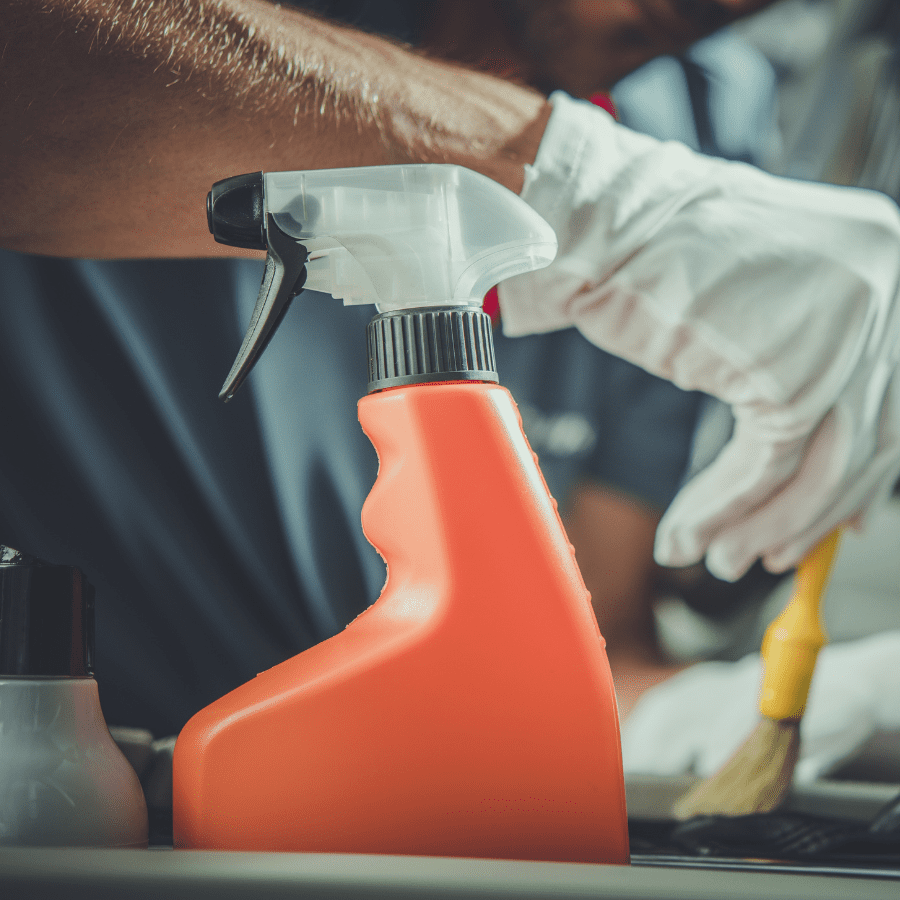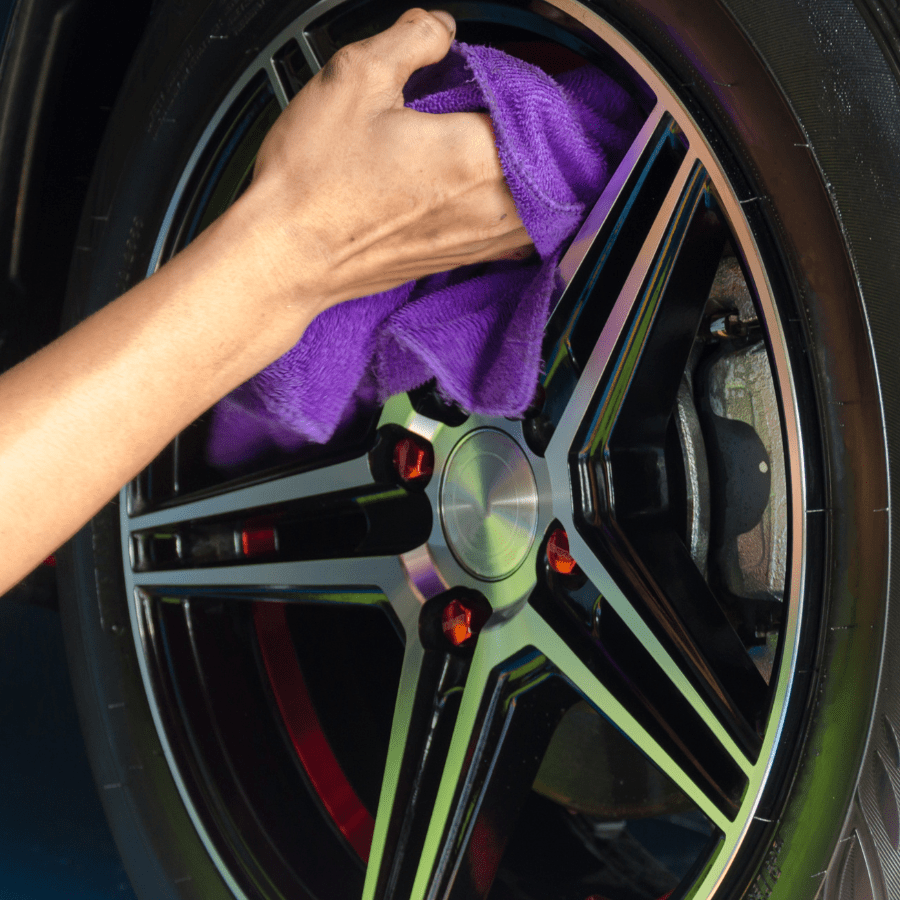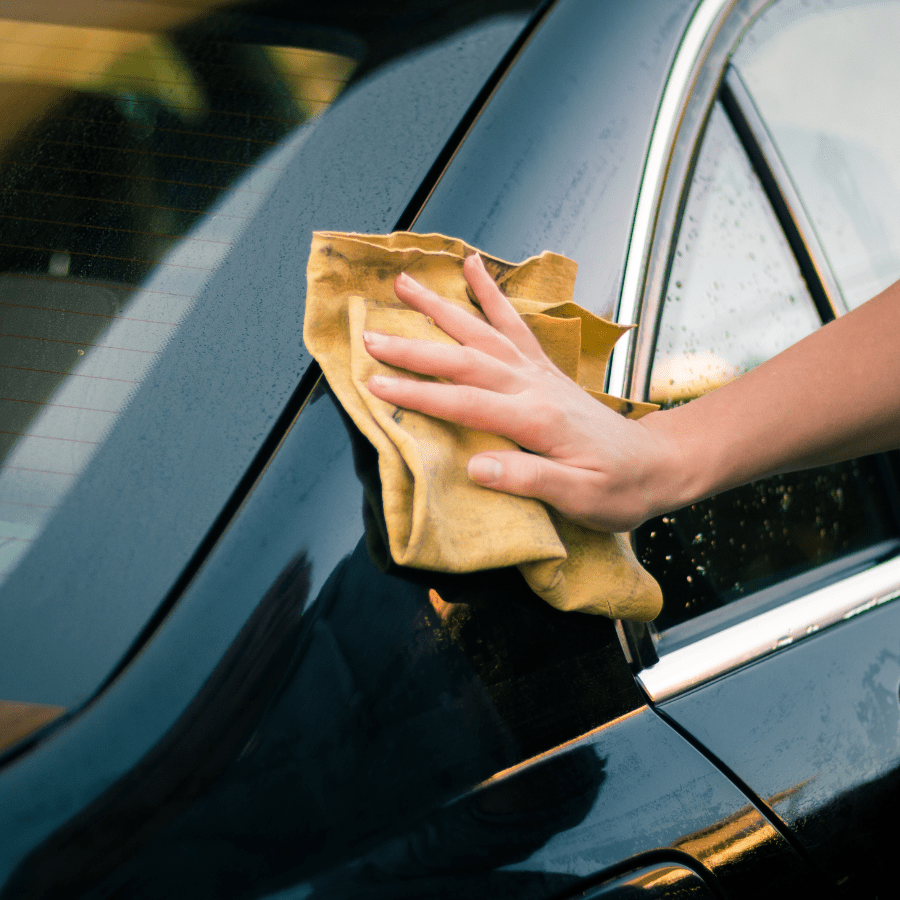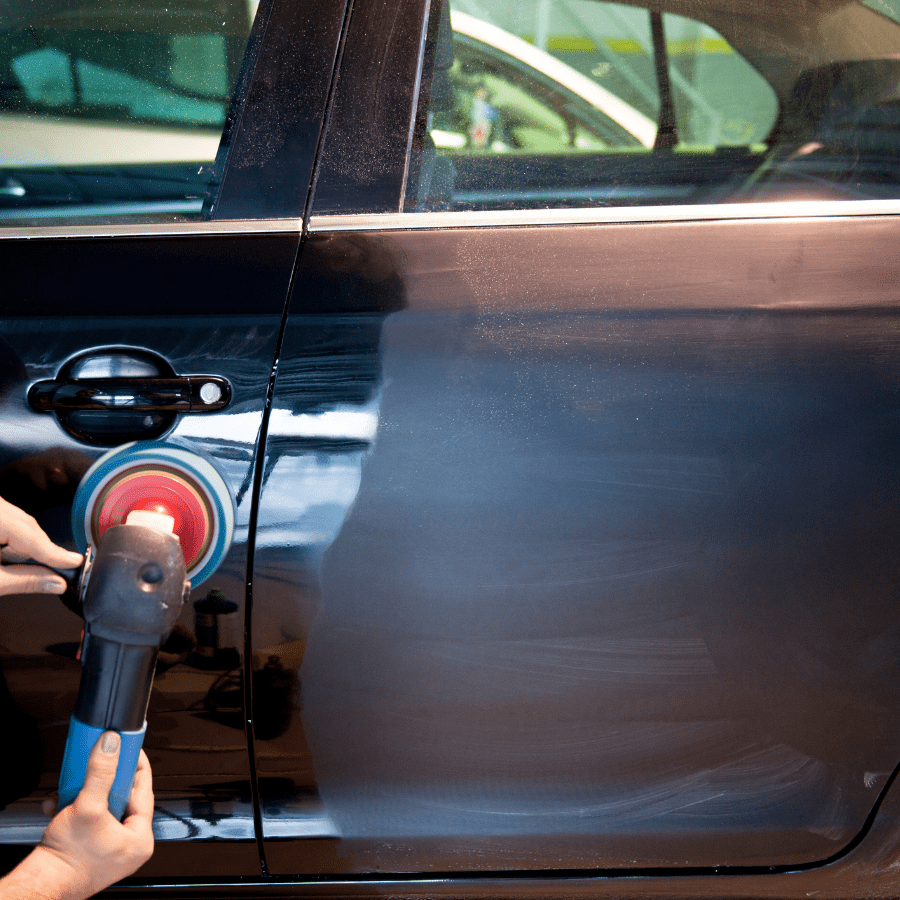The Ultimate Guide To Effective Car Cleaning

Key Highlights
- The importance of regular car maintenance for longevity
- Gathering the necessary tools and products for car cleaning
- Setting up a proper cleaning space for efficient car cleaning
- Step-by-step guide to cleaning the interior and exterior of a car
- Advanced car cleaning techniques for a shiny finish
- Eco-friendly car cleaning tips and homemade solutions
- Troubleshooting common car cleaning challenges
- Maintaining the cleanliness of your car with a regular cleaning schedule and protective measures
Introduction
Keeping your car clean is not just about aesthetics, it is also essential for maintaining its overall condition and longevity. Regular cleaning helps to remove dirt, grime, and other contaminants that can damage the exterior paint, interior surfaces, and even the mechanical components of your car. However, effective car cleaning goes beyond just a quick wash. It involves understanding the different techniques, tools, and products needed to achieve a thorough and long-lasting clean. In this ultimate guide to effective car cleaning, we will walk you through the key highlights, step-by-step processes, advanced techniques, eco-friendly tips, and troubleshooting common challenges to help you achieve professional-level results. Whether you are a car enthusiast or simply want to take better care of your vehicle, this guide will provide you with all the information you need to get started on your car cleaning journey.
Understanding Car Cleaning Essentials

Before we dive into the nitty-gritty of car cleaning, it is important to understand the essential concepts and terms associated with it. Car cleaning generally refers to the process of removing dirt and grime from the exterior and interior surfaces of a car. On the other hand, car detailing takes car cleaning to a whole new level by focusing on restoring and enhancing the overall appearance of the car. A detailing kit, such as this one from amazon, contains a variety of products specifically designed for different cleaning and detailing tasks. These kits often include car wash soap, microfiber cloths, a variety of small detail brushes, polishes, waxes, and more.
What Makes Car Cleaning Different?
Car cleaning differs from regular cleaning tasks in several ways. When it comes to car detailing, attention to detail is key. This means paying close attention to every nook and cranny of the car, including hard-to-reach areas and intricately designed features. To achieve a thorough clean, it is important to use specialized tools and techniques. Microfiber cloths are an essential tool that effectively removes dirt and absorbs moisture without leaving streaks or lint behind. These high-quality materials are gentle on the car’s paint and other surfaces, ensuring a scratch-free cleaning experience.
The Importance of Regular Car Maintenance
Regular car maintenance is crucial for the longevity and overall performance of your vehicle. While car cleaning focuses on the aesthetic aspects, maintenance goes beyond that to ensure the proper functioning of the car’s mechanical components. Regular cleaning and detailing help to prevent the buildup of dirt and contaminants that can lead to corrosion and damage. Additionally, regular maintenance tasks, such as oil changes, tire rotations, and brake inspections, keep the car running smoothly and reduce the risk of costly repairs. By incorporating regular car cleaning and maintenance into your routine, you can extend the life of your vehicle and enjoy a clean and reliable ride for years to come.
Preparing for Car Cleaning
Before you start cleaning your car, you’ll want to gather the necessary tools and products. A good car soap is essential for effectively removing dirt and grime from the car’s exterior without damaging the paint. A pressure washer can be a valuable tool for thoroughly rinsing the car and removing stubborn dirt and debris. Additionally, investing in a detailing kit, s, can provide you with all the necessary products and tools for a professional-level clean. We will be testing the Armor All cleaning kit in our vehicles. This kit includes protectant, glass and multi purpose cleaner, air fresheners, wash pads and wax, tire shine, and wheel cleaner.

Gathering Your Car Cleaning Tools and Products
To achieve a thorough and effective car cleaning, it is important to have the right tools and products on hand. Microfiber cloths are a must-have for car cleaning, as they are highly absorbent and gentle on the car’s surfaces. They can be used for everything from wiping down the dash to drying the car after a wash. Car wax is another essential product that helps to protect the car’s paint and give it a shiny finish. It provides a protective layer that repels dirt and contaminants, making future cleaning easier.
Setting Up Your Cleaning Space
Creating an ideal cleaning space is important for efficient car cleaning. Start by ensuring you have access to clean water for rinsing and washing. Direct sunlight can be helpful for drying, but it’s important to work in small areas to prevent water spots and premature drying. If possible, choose a shaded area or work on a cloudy day to avoid direct sunlight. It’s also a good idea to have a bucket or a wash basin nearby to hold your cleaning products and tools. Gather all the products and tools you will be using and keep them close by on a clean surface. By setting up a dedicated cleaning space, you can streamline the car cleaning process and achieve better results.
Interior Cleaning Made Simple
Cleaning the interior of your car is just as important as cleaning the exterior. It not only improves the overall appearance but also creates a more pleasant driving experience. With a clean car, you’ll be able to tackle pickups, drop offs, errands, and more like a pro.
Step 1: Removing Trash and De-cluttering
Before diving into the deep cleaning process, start by removing any trash and clutter from the car. Take out any empty bottles, food wrappers, and other debris that may have accumulated. Don’t forget to check under the seats and in the door pockets for hidden trash. Once the trash is removed, take a moment to declutter the car by organizing any items that are left. Use storage solutions, such as bins or organizers, to keep essential items like tissues, hand sanitizer, and sunglasses neatly organized. These seat organizers from Amazon can really be a lifesaver if you have little ones. This will not only make the cleaning process easier but also create a more pleasant driving environment. Don’t forget to remove the floor mats for cleaning as well.
Step 2: Vacuuming Seats, Carpets, and Floor Mats

After removing trash and clutter, it’s time to give the seats, carpets, and floor mats a thorough vacuuming. Start by using a vacuum cleaner with the appropriate attachments to remove any loose dirt and debris from the seats. Pay close attention to the crevices and seams where dirt can accumulate. Next, move on to the carpets and floor mats. Use a carpet cleaner or a brush attachment on your vacuum cleaner to agitate the fibers and lift any embedded dirt. If you have a massage gun, it’s possible to use it to help remove stubborn debris because the vibrations can loosen dust and dirt from carpet fibers. For stubborn stains, consider using a carpet cleaner specifically formulated for automotive use. This will help to remove tough stains and leave your carpets looking fresh and clean. Finally, don’t forget to vacuum the floor mats on both sides to remove any dirt and debris that may have collected.
Step 3: Cleaning the Dashboard and Console
The dashboard and console are often the most visible parts of the car’s interior, so it’s important to give them a thorough cleaning. Start by using a microfiber cloth to gently wipe away any dust and debris from the surfaces. Be sure to pay attention to the buttons, knobs, and vents, as these areas can accumulate dirt and grime. For stubborn stains or sticky residue, use a mild cleaner specifically formulated for automotive use. Apply the cleaner to a microfiber cloth and gently scrub the affected areas. Detailing brushes can help around tricky ares. Make sure you are using one with soft bristles as to not scratch your cars surfaces. Avoid using harsh chemicals or abrasive materials, as these can damage the surfaces. After cleaning, use a dry microfiber cloth to wipe away any excess moisture and leave the dashboard and console looking clean and shiny.
Step 4: Cleaning Windows and Mirrors

Clean and streak-free windows and mirrors are essential for clear visibility while driving. Follow these steps for a crystal-clear shine:
- Start by using a glass cleaner specifically formulated for automotive use. Avoid using ammonia-based cleaners, as they can damage tinted windows and rubber seals.
- Spray the glass cleaner onto a microfiber cloth, rather than directly onto the glass, to prevent overspray.
- Wipe the windows and mirrors using a back-and-forth or circular motion, paying close attention to any streaks or smudges.
- Finally, use a clean, dry microfiber cloth to buff the glass to a streak-free shine.
A Step-by-Step Guide to Exterior Cleaning
Cleaning the exterior of your car is essential for maintaining its appearance and protecting the paint. Follow these steps for a thorough exterior clean:
Step 1: Rinsing Your Car to Remove Loose Dirt
Before you start washing your car, it’s important to rinse off any loose dirt and debris. This will prevent scratching the paint during the washing process. Start by using a hose or pressure washer to thoroughly rinse the entire car, focusing on the areas that are particularly dirty or have caked-on grime. Use a strong stream of water to dislodge any stubborn dirt. Make sure to rinse the wheels and tires as well to remove brake dust and other contaminants. This step will make the subsequent washing process more effective and help to achieve a cleaner finish.
Step 2: Applying Soap and Scrubbing the Body
After rinsing off loose dirt, it’s time to apply soap and scrub the body of your car. Use a high-quality car soap that is specifically formulated for automotive use. Fill a bucket with clean water and add the recommended amount of car soap according to the product instructions. Dip a wash mitt or a soft sponge into the soapy water and apply it to the car’s surface in a circular motion. Start from the top and work your way down to ensure complete coverage. Pay extra attention to areas that are particularly dirty, such as the lower parts of the car and the wheel wells. Rinse the wash mitt or sponge frequently to prevent dirt from scratching the paint. Continue scrubbing until the entire car has been thoroughly cleaned.
Step 3: Cleaning the Wheels and Tires

Cleaning the wheels and tires is an important step in achieving a thorough car cleaning. Start by applying a specialized wheel and tire cleaner to the wheels and tires. These products are specifically formulated to remove brake dust, road grime, and other contaminants. Use a scrub brush or a wheel brush to agitate the cleaner and remove any stubborn deposits. Be sure to clean both the face of the wheels and the inner barrel for a complete clean. After scrubbing, rinse off the cleaner with clean water. Repeat the process if necessary to achieve a clean and shiny finish. Finally, dry the wheels and tires using a microfiber cloth to prevent water spots.
Step 4: Rinsing Off the Soap
Once you have finished scrubbing the car with soap, it’s time to rinse off the soap and residue. Use a hose or pressure washer to thoroughly rinse the entire car, making sure to remove all traces of soap. Start from the top and work your way down, ensuring that all areas are properly rinsed. It’s important to use clean water for this step to prevent any leftover soap from drying on the car’s surface and leaving behind streaks or water spots. Rinse the wheels and tires as well to remove any remaining soap or cleaning products. Proper rinsing is crucial for achieving a clean and spot-free finish.
Step 5: Drying Your Car Properly

Properly drying your car after rinsing is an important step in preventing water spots and streaks. Use a clean and absorbent microfiber cloth to dry the car’s surfaces. Start from the top and work your way down, making sure to dry all areas thoroughly. Pay extra attention to crevices, door frames, and other hard-to-reach areas where water can accumulate. Avoid drying your car in direct sunlight, as this can cause the water to evaporate too quickly and leave behind water spots. Instead, choose a shaded area or work on a cloudy day for the best results. Take your time and be thorough when drying to achieve a clean and streak-free finish.
Advanced Car Cleaning Techniques
If you want to take your car cleaning to the next level, there are advanced techniques and products available. Car polish is a great option for enhancing the shine and removing minor imperfections from the paint. It helps to restore the luster and smoothness of the paint, giving your car a showroom finish. Another advanced technique is applying a ceramic coating, which provides long-lasting protection and a hydrophobic effect. This coating creates a barrier between the car’s surfaces and contaminants, making future cleaning easier. Additionally, using a clay bar can help to remove embedded contaminants that are not easily removed by traditional washing methods. These advanced techniques and products require careful application and attention to detail but can significantly enhance the overall appearance of your car.
How to Polish Your Car for a Shiny Finish
Polishing your car is a great way to achieve a shiny and smooth finish. Start by applying a small amount of car polish to a clean and dry microfiber cloth. Work the polish into the paint using circular motions, applying gentle pressure. This helps to remove minor imperfections, such as light scratches and swirl marks. For best results, work in small sections and buff the polish with a clean microfiber cloth when it starts to dry. Repeat the process until the entire car has been polished. Finally, use a separate clean and dry microfiber cloth to give the car a final buff, ensuring a smooth and glossy finish.
Waxing Your Car for Extra Protection

Waxing your car is an essential step in protecting the paint and enhancing its shine. There are various types of car waxes available, including paste wax, liquid wax, and spray wax. Choose a high-quality car wax and apply it to the paint using an applicator pad or a soft cloth. Work in small sections and apply the wax in a thin and even layer. Allow the wax to dry to a haze, typically for a few minutes, and then buff it off with a clean microfiber cloth. This process helps to create a protective coating on the paint, making it easier to clean and providing added protection against environmental contaminants and UV rays. Regular waxing can help to maintain the shine and longevity of your car’s paint.
Using Waterless Car Wash Products
Waterless car wash products offer a convenient and eco-friendly alternative to traditional car washing methods. These products are designed to clean and protect your car’s surfaces without the need for water. To use a waterless car wash product, simply spray it onto the car’s surface and allow it to dwell for a few moments. Then, use a microfiber cloth to gently wipe away the dirt and grime. The product’s formula helps to encapsulate and lift the dirt, making it easier to remove without scratching the paint. This method is ideal for situations where water is limited or not readily available, such as during droughts or in areas with water restrictions. Additionally, waterless car wash products are often eco-friendly and biodegradable, making them a sustainable choice for car cleaning.
DIY Eco-Friendly Cleaning Solutions
If you prefer a more DIY approach to eco-friendly car cleaning, there are several homemade solutions you can try. Vinegar and water make a great all-purpose cleaner for windows, mirrors, and other glass surfaces. Simply mix equal parts vinegar and water in a spray bottle and use it to clean the desired surfaces. Check out our other blog for more on vinegar cleaning. Baking soda is another versatile ingredient that can be used for various cleaning tasks. It can help to remove odors from carpets, upholstery, and floor mats. Sprinkle baking soda on the affected areas, let it sit for a few hours or overnight, and then vacuum it up. Always test products on a small inconspicuous area before diving in. When cleaning leather seats take extra precautions before using a new product. These simple and affordable DIY solutions offer a greener alternative to commercial cleaning products.
Troubleshooting Common Car Cleaning Challenges
Car cleaning can sometimes come with its fair share of challenges. From stubborn stains to pet hair, it’s important to know how to tackle these common issues. For stubborn stains on upholstery or carpet, consider using a specialized stain remover and following the product instructions. Pet hair can be removed effectively using a vacuum cleaner with specific attachments designed for pet hair removal. When cleaning the interior, it’s essential to use the right tools and products to avoid damaging surfaces. From upholstery to floor mats, understanding the proper cleaning techniques and products can help you overcome these challenges and achieve a clean and fresh interior.
Removing Pet Hair Effectively

Pet hair can be a common challenge for car owners, especially those with furry friends who accompany them on car rides. To effectively remove pet hair, start by using a vacuum cleaner with specialized attachments designed for pet hair removal. Attachments such as brush tools or rubber attachments can help loosen and lift the hair from upholstery and carpets. Use long, sweeping motions to collect the hair, and empty the vacuum cleaner frequently to prevent clogging. For hard-to-reach areas, such as between seats or in tight crevices, consider using a detailing brush or long attachment. These tools can help to dislodge and collect pet hair from even the most challenging areas. Regular vacuuming and grooming of your pets can also help to minimize the amount of pet hair in your car.
Maintaining Your Car’s Cleanliness
Once you have achieved a clean and fresh car, it’s important to maintain its cleanliness for long-lasting results. Regular car cleaning and detailing should be part of your maintenance routine. Set a regular schedule for cleaning and stick to it. This will help to prevent dirt and grime from building up and becoming more difficult to remove. Additionally, consider implementing protective measures, such as applying a protective coating or using floor mats and seat covers. These measures can help to minimize the impact of daily wear and tear on your car’s interior. By incorporating regular cleaning and protective measures into your car care routine, you can ensure that your car stays clean and fresh for longer.
Conclusion

In conclusion, maintaining a clean car not only enhances its appearance but also prolongs its lifespan. Regular cleaning, both inside and out, is essential for a well-maintained vehicle. Remember to use the right tools and products for effective cleaning. Eco-friendly options are available for those looking to minimize their environmental impact. By following these steps and incorporating advanced techniques when needed, you can ensure your car stays looking pristine. Don’t forget to establish a regular cleaning schedule and take preventive measures to preserve your car’s cleanliness for longer periods. Keep your vehicle sparkling and protected with these effective car cleaning tips!
Frequently Asked Questions
How Often Should I Clean My Car?
The frequency of car cleaning depends on various factors, such as your driving habits and the environment in which you drive. As a general guideline, it is recommended to wash your car at least once every two weeks for best results. However, regular cleaning, including interior vacuuming and wiping down surfaces, can be done on a weekly basis. This helps to prevent dirt and grime from building up and ensures that your car stays clean and fresh.
Can I Use Household Cleaners for My Car?
It is generally not recommended to use household cleaners for car cleaning. Household cleaners may contain harsh chemicals that can damage the car’s upholstery, dashboard, and other surfaces. It is best to use products specifically formulated for automotive use to ensure the safety and longevity of your car’s interior.
Are there any eco-friendly or homemade solutions for cleaning a car?
Yes, there are several eco-friendly and homemade solutions that can be used for car cleaning. Vinegar and water can be used as a glass cleaner, while baking soda can help remove odors and stains. Diluted dish soap can also be used as a general cleaning solution. These homemade solutions are often more environmentally friendly and can be effective for various car cleaning tasks.